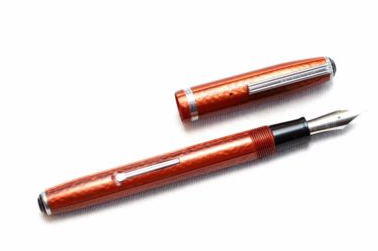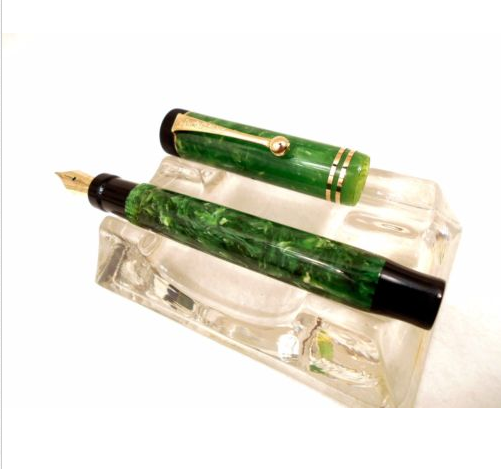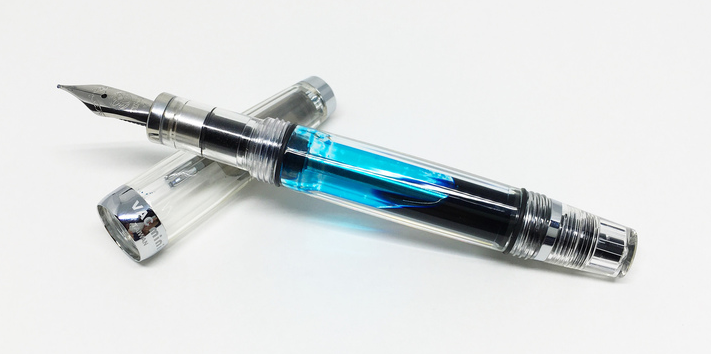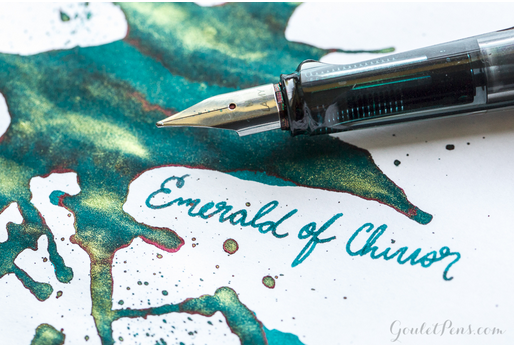This is a somewhat unique fountain pen. This was the first fountain pen that allowed you to easily change the nib. It simply unscrews from the barrel, and a different nib could be used. You could use a fine point nib for writing a letter, and then change to a broad or stub nib to address the envelope to add some flair to the writing.
These were not expensive pens, relatively speaking, and were made in large quantities. The ink sac frequently needs to be replaced after many years of use (or lack of use), but that is a fairly easy thing to do.
The colors are unique, and the hardware such as the lever, the clip, and the ring on the cap were made of stainless steel, so there is no plated finish to wear off, and the pen continues to look good even after extensive use.
Because these were made in large quantities, and are so easily repaired, they are popular today and don’t command large prices as many other pens from that era seem to do. Average prices are in the $20 to $30 range, and the parts to replace the ink sac are a couple of dollars. They are easy to find, and replacement nibs are easily found as well.
I liked the color of this particular pen, and I will be keeping an eye out for a broad or stub nib for it.




